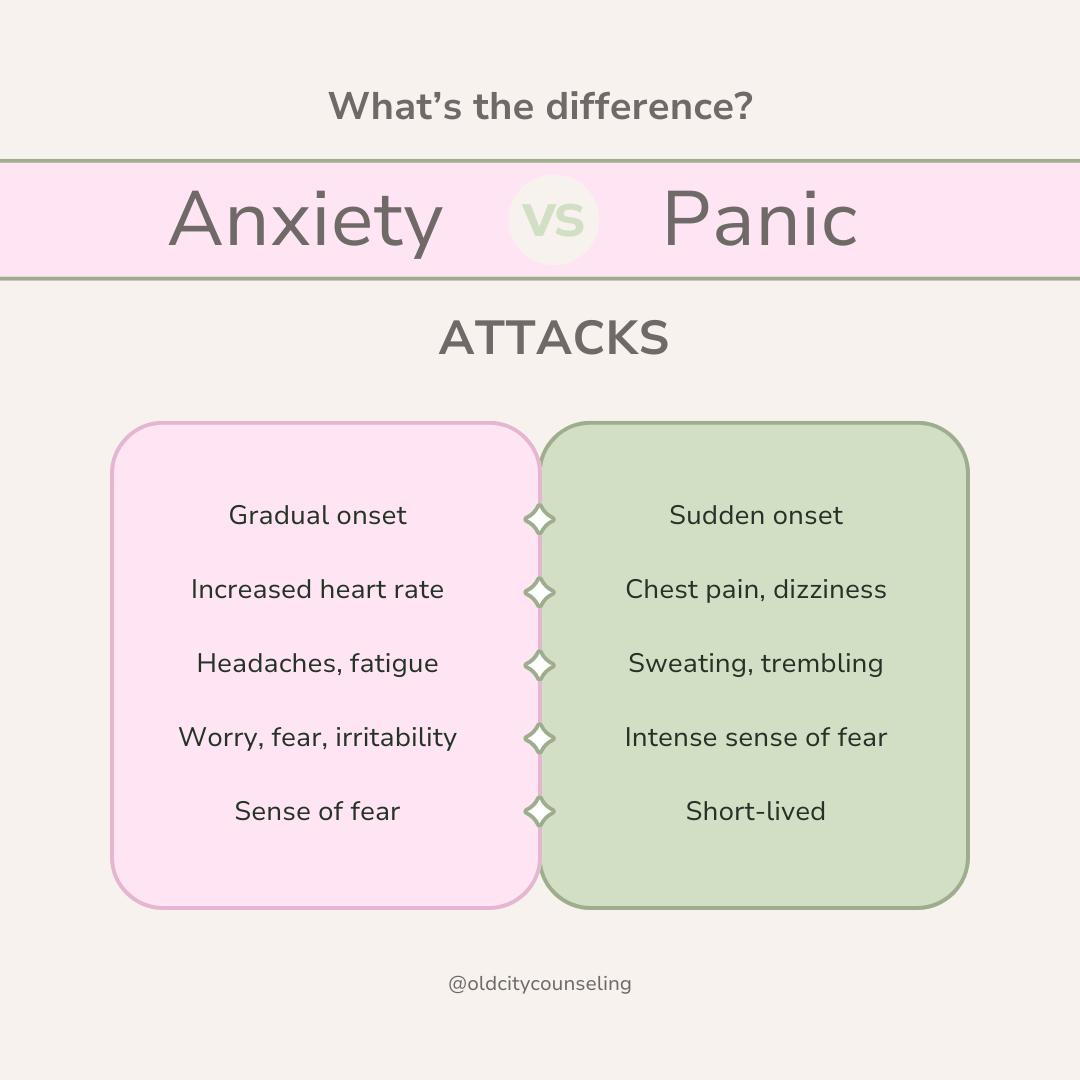
In our fast-paced world, it's not uncommon for people to experience overwhelming feelings of stress and anxiety. However, it's important to distinguish between the various forms these feelings can take. Two terms often used interchangeably are "anxiety attacks" and "panic attacks." While they share some similarities, they are distinct experiences with different triggers, symptoms, and durations. In this blog post, we will explore the differences between anxiety attacks and panic attacks to help you understand and recognize each one better.
What is an Anxiety Attack?
Anxiety attacks are often less intense but can be more prolonged than panic attacks. They are typically characterized by a gradual build-up of anxiety over time and are usually related to a specific stressor or ongoing worry.
Symptoms of an Anxiety Attack:
- Gradual Onset: Anxiety attacks usually develop slowly, building up over hours, days, or even weeks.
- Physical Symptoms: These can include muscle tension, headaches, stomachaches, fatigue, and increased heart rate.
- Emotional Symptoms: Individuals may experience excessive worry, fear, irritability, or a sense of dread.
- Triggers: Anxiety attacks are often triggered by stressors such as work pressure, relationship issues, financial problems, or health concerns.
Example Scenario: Imagine you have a big presentation at work. Over the days leading up to it, you might find yourself increasingly worried and unable to sleep, with a persistent feeling of unease that culminates in an anxiety attack the night before the presentation.
What is a Panic Attack?
Panic attacks are sudden and intense. They often come without warning and involve a combination of severe physical and emotional symptoms. Unlike anxiety attacks, they can occur without an obvious trigger.
Symptoms of a Panic Attack:
- Sudden Onset: Panic attacks strike suddenly, often without warning.
- Physical Symptoms: These can be severe and include chest pain, heart palpitations, shortness of breath, dizziness, sweating, and trembling. Some people feel like they are having a heart attack.
- Emotional Symptoms: A feeling of intense fear, a sense of impending doom, and a loss of control are common.
- Duration: Panic attacks are usually short-lived, lasting about 10 to 20 minutes, though the aftermath can leave individuals feeling drained and exhausted.
Example Scenario: You’re sitting at home watching TV when suddenly, without any warning, you feel your heart pounding, you can’t catch your breath, and you’re overwhelmed by a fear that something terrible is about to happen.
Managing Anxiety and Panic Attacks
Understanding the differences between anxiety attacks and panic attacks is crucial for effective management. Here are some strategies:
For Anxiety Attacks:
- Cognitive Behavioral Therapy (CBT): Helps in identifying and changing negative thought patterns.
- Mindfulness and Relaxation Techniques: Practices such as meditation, deep breathing exercises, and yoga can help reduce overall anxiety levels.
- Lifestyle Changes: Regular exercise, a healthy diet, and adequate sleep can improve overall well-being.
For Panic Attacks:
- Breathing Techniques: Slow, deep breaths can help manage the immediate symptoms of a panic attack.
- Grounding Techniques: Focusing on physical sensations, such as touching a familiar object, can help ground you in the present moment.
- Professional Help: Therapy, particularly CBT, and sometimes medication can be very effective in reducing the frequency and severity of panic attacks.
When to Seek Help
If you or someone you know is experiencing frequent anxiety or panic attacks, it’s important to seek professional help. A mental health professional can provide the appropriate treatment and support to manage these conditions effectively.
Understanding the nuances between anxiety attacks and panic attacks can empower you to take the right steps towards managing your mental health. By recognizing the signs and symptoms of each, you can better navigate the challenges they present and seek the support you need.
